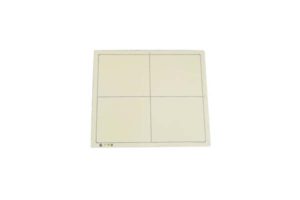Flat panel detectors are divided into two types: amorphous selenium/amorphous silicon flat panel detectors; mainly composed of amorphous selenium layer (a-Se)/amorphous silicon layer (a-Si) plus thin film semiconductor array (TFT). Amorphous silicon flat panel detectors are divided into amorphous silicon + cesium iodide flat panel detectors and amorphous silicon + gadolinium oxide flat panel detectors.
1. Amorphous silicon flat panel detector (a-Si) – two-step digital conversion technology, X-photon first becomes visible light and then detected by photoelectric tube and converted into digital signal. Mainstream manufacturers include Philips, Siemens, GE and so on. Because the coating technology is different, it is divided into amorphous silicon + cesium iodide flat plate and amorphous silicon + gadolinium oxide flat plate.
2. Amorphous selenium flat panel detector (a-Se) – A so-called direct detection technology, X-photons become electrical signals in the selenium coating layer and are detected and directly converted into digital signals. At present, only a certain American company has the core of this technology in the world, and some domestic manufacturers’ DRs use this type of flat panel detector.
The technological progress of DR is closely related to the development of image board technology. The technological development of flat panel detectors is reflected in two aspects: size and dynamic response time.

Author:Lillian
Tel:+86 18953679166
Email:service@newheek.com
Company:Weifang Newheek Electronic Tech Co., Ltd.